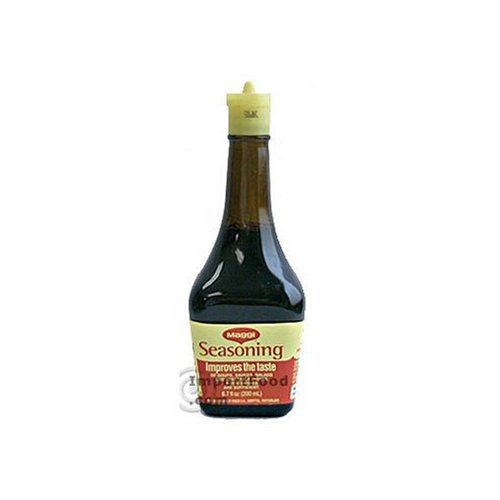Keeping with the eastern theme, this week was West Lake Fish and Cabbage with Cream Sauce (the latter because it is one of the taster's favorite childhood comfort food).
Starting with the fish, it calls for "600g fish (carp of any kind of fresh water fish)[sic]". This is problematic around here since the only whole fish I can find are ocean fish. I opted for a striped bass (locally known as rockfish) since they spend some of their time in fresh water.
 |
| Striped bass is striped |
Next is the question of the vinegar. The recipe calls for "Brown vinegar," but I've never heard of that. Fortunately the Chinese version calls for Chinkiang Vinegar, which I already had.
 |
| I guess it is brown... |
The fish is boiled for just two minutes
which can be tricky and I messed it up. When it came time for removal, I didn't have a good utensil for it, and wasted another minute looking for one, and overcooked the fish. :-(
In making the sauce, everything was straightforward, except for the part where it calls to add 3 tablespoons of lotus root starch or cornstarch. I was using cornstarch, and everyone knows you can't just add the starch directly, you just end up with lumpy balls. But since other recipes in the book do explicitly call for make a slurry or paste first, I thought maybe Pei Mei knew what she was talking about. I added the cornstarch and then I strained out out lumps and tried again with a slurry.
The final dish came out like this:
Tasting notes: The taster said the flavors are right, but agreed the fish was overcooked. I thought the the sauce became watered down from the boiling liquid that came off the fish. Next time I'll rest them on paper towels.
Final notes: The Chinese version has some comments that don't make it into the English:
- It calls for dark soy sauce not regular. Found this out too late.
- It urges the use of live fish that you kill yourself.
- It notes that you can use caramel (we think) instead of soy sauce. Intriguing.
The cabbage too, had some difficulties. First off, it calls for "Chinese cabbage", which can be a translation for either Napa cabbage or bok choy. It's Napa. The other issue was minor, it calls for Chinese ham, which is unique enough that it should not be substituted for. It so happens we were spending the weekend in NYC and managed a trip to Chinatown.
The recipe just says to chop the ham and use as a garnish, which scares me a little, since the package was clear that the ham is raw and must be cooked. We Americans are used not cooking ham, and I could see a dangerous mistake (I cooked it).
The process is just to stir fry the cabbage, add salt and sugar, make a sauce with chicken stock, cornstarch and cream. Sprinkle with chopped ham.
Tasting notes: This one is a win. Easy and tasty, with the rich sauce balanced by sweet cabbage, and salty ham. The taster laments that the version from her childhood was baked as well.























